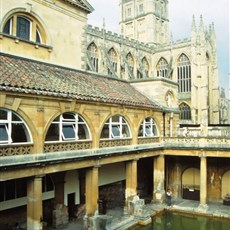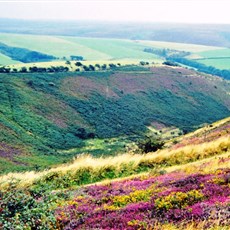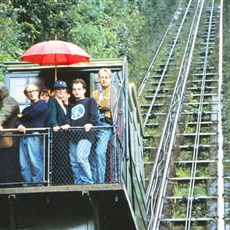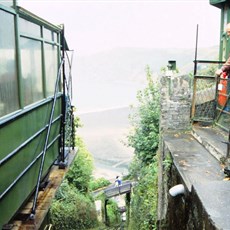1993 Biking Britain
My favourite cities? York, Chester and Bath. The York Minster has a medieval stained-glass window the size of a tennis court, which was removed and buried for safekeeping during both world wars. And the streets are alive with street artists: pavement painters, jugglers, Houdinis.
Chester’s skyline is a photographer’s dream, its two-tier shopping system a shopper’s paradise, its restaurants a gourmet’s delight. One of Chester’s more positive characters was a woman who had 27 children. Local joke: She was in labour longer than Neil Kinnock!
The Romans, to honour their goddess Minerva, built a temple and public baths over Britain’s only hot spring. The water that to this day gushes from the earth at 46.5 degrees, fell as rain in the Mendip Hills between 20,000 and 80,000 years ago, and sank to 3,000 feet where it was heated by the earth. The Georgian architecture of later Bath is superb.
The Exmoor National Park on the north coast of Devon was particularly beautiful as the heather and gorse were in full bloom – purple and yellow under a drizzle-grey sky. From Porlock on the east border of the park you have to climb 1,200 feet to the top of the moor. You have a choice: a short 1 in 4 gradient or a three-mile 1 in 14 gradient. I chose the latter. Once through the park the road drops into Lynmouth and climbs again into Lynton – both 1 in 4 gradients. As the road begins to drop there is a sign suggesting that cyclists get off and walk, which I didn’t obey! I couldn’t face the road up to Lynton as I had miles to go before I could sleep. So…

York minster

Chester

Chester

Bath

Heather on the moor
The big cheat
The clever Victorians built a clever
contraption to take holiday-makers up the hill from Lynmouth to Lynton. And on
this I persuaded the “drivers” to take me and my bike. Two lifts with water
tanks below running on parallel tracks and linked by an oval conveyor belt. The
water tank is filled at the top of the hill and emptied at the bottom. As the
top tank is filled, the top lift gets heavier than that at the bottom, and at
some critical point begins its descent, at the same time pulling up the lift
from below. Not an engine in sight and quite simply brilliant.

Victorian "lift"

Victorian "lift"